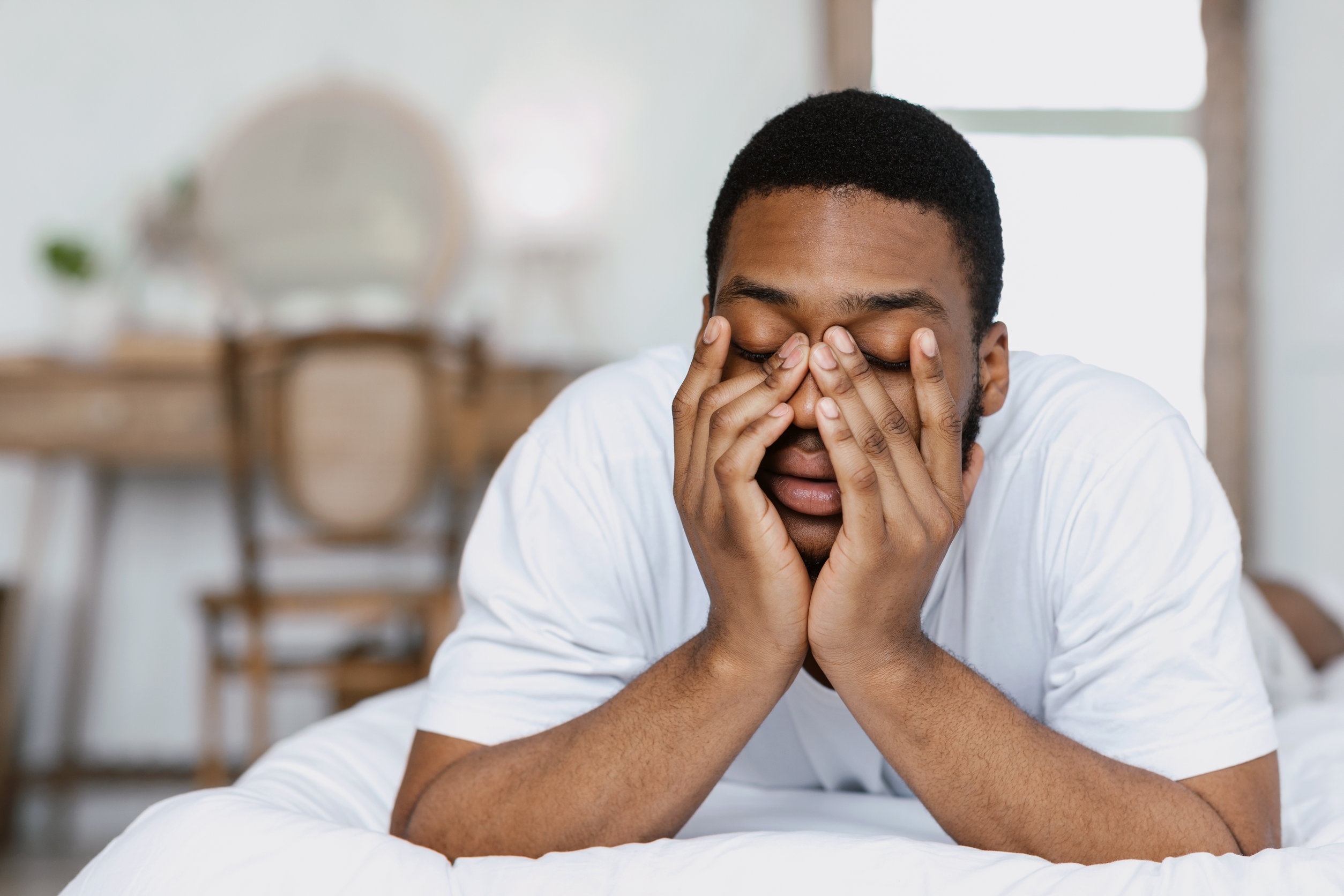”Montana, how often do you take naps? Naps can be used to help make up for lost sleep. You can learn more about naps in this week's article! We hope you find this helpful and informative.
Reading Time: 4 Minutes
MWi Hack:
- Discover everything you need to know about napping and which type of nap would suit your needs the most
MWi Summary:
- There are many different kinds of naps, such as recovery naps to make up for sleep deprivation or appetitive naps that are taken for the enjoyment of napping.
- Researchers suggest that 10-20 minute naps are most effective. You can make your napping more effective by napping early, creating a sleep-friendly environment, setting aside your worries, and reflecting on why you’re napping.
- Benefits of napping include reducing sleepiness, improving learning, aiding memory formation, and regulating emotions.
- The need for naps changes as we age. For example, infants need 1-4 naps a day while napping in teens can impact how much sleep they get at night.
A nap is a short period of sleep, usually taken during the day. One-third1 of American adults nap. Many swear by napping as an effective way to relax and recharge, while others find naps unhelpful and disruptive to their sleep.
Not all naps are created equal, and many factors impact how helpful naps can be. By understanding the role of napping, you can learn to take effective naps that support your body’s internal clock and maintain your energy level throughout the day.
Types of Naps
Naps can be categorized2 depending on the function they serve. Thinking about what you’re hoping to gain from a nap is one part of making napping work for you.
- Recovery Nap: Sleep deprivation can leave you feeling tired the following day. If you are up late or have interrupted sleep one night, you might take a recovery nap the next day to compensate for sleep loss.
- Prophylactic Nap: This type of nap is taken in preparation for sleep loss. For example, night shift workers may schedule naps before and during their shifts in order to prevent sleepiness and to stay alert while working.
- Appetitive Nap: Appetitive naps are taken for the enjoyment of napping. Napping can be relaxing and can improve your mood and energy level upon waking.
- Fulfillment Nap: Children have a greater need for sleep than adults. Fulfillment naps are often scheduled into the days of infants and toddlers and can occur spontaneously in children of all ages.
- Essential Nap: When you are sick, you have a greater need for sleep. This is because your immune system mounts a response to fight infection or promote healing, and that requires extra energy. Naps taken during illness are considered essential.
How Long Should I Nap?
One significant factor responsible for the varied effects of naps is their length. Anytime we fall asleep, we begin to move through a series of sleep stages. Researchers found that five-minute naps are too short3 to move deep enough through sleep stages to produce a notable benefit. On the other hand, sleeping for 30 minutes or longer gives the body enough time to enter deep (slow-wave) sleep. However, napping for too long or waking up from slow-wave sleep can leave you feeling groggy for up to an hour4. This period of drowsiness is also called “sleep inertia.”
Given these considerations, the best nap length in most situations is one that is long enough to be refreshing but not so long that sleep inertia occurs. Naps lasting 10 to 20 minutes are considered the ideal length. They are sometimes referred to as “power naps” because they provide recovery benefits without leaving the napper feeling sleepy afterward.
Exceptions to this include essential naps when sick, which are often longer because our bodies require more sleep when dealing with an illness. Also, fulfillment naps in children should not be limited to 20 minutes, as children have a higher sleep requirement than adults.
If you’re a healthy adult and wish to take a longer nap, don’t do it right before you need to be alert. Keep in mind that napping during the daytime could interfere with your nighttime sleep.
Are Naps Good For You?
Napping can be helpful or harmful depending on a few different factors, such as your age, what time and how long you nap, and the reason for your nap. To get the most benefit from napping, it’s important to learn how each of these factors affects the impact of a nap.
Benefits of Napping
Homeostatic sleep drive is the technical term for the feeling of pressure to sleep. It is synonymous with the hunger we feel for food the longer it is after our last meal. When we wake up from a good night’s sleep, our homeostatic sleep drive is low. The pressure slowly increases throughout the day until bedtime, when we feel sleepy. Sleeping at night decreases sleep pressure, and then the cycle begins again the next day.
Napping during the day diminishes homeostatic sleep drive, which can help us feel more awake and perform better. As a result, napping can help with:
Naps also play a special role for drivers. Driving while drowsy is dangerous for you, your passengers, and others on the road. Drowsy drivers are involved in hundreds of thousands of car crashes9 in the United States each year. To counter this, the National Highway Traffic Safety Administration10 recommends to first, get adequate amounts of sleep (7-8 hours) on a nightly basis. Before a long drive, get a good night’s sleep. If you start to feel sleepy while driving, the National Highway Traffic Safety Administration recommends drinking caffeine and pulling over safely for a 20-minute nap. However, this is not a long-term solution, as naps and caffeine are known to increase alertness for only a short period of time.
Shift work is any work schedule that falls outside the hours of 7 a.m. and 6 p.m. Shift work is associated with increased risk11 for health effects and injury due to sleep loss and circadian rhythm disruptions. Planned napping12 improves alertness and reaction time in shift workers.
Harms of Napping
Napping isn’t for everyone. In fact, some people find napping counterproductive. Although reducing sleep pressure can combat fatigue, it can also interfere with your ability to fall asleep at bedtime. People who have trouble falling asleep or staying asleep at night, for example, those with insomnia, may want to avoid napping.
Sleep inertia (sleepiness after waking from a nap) can be minimized or avoided by taking shorter naps. However, you can still feel disoriented even after a short nap, so napping may be disruptive if you need to get right back to work afterward.
How to Take the Best Nap
Taking a few key steps will set you up for your most successful nap.
- Set an alarm: Studies show that the best nap length for most people is about 10-20 minutes. This provides restorative sleep without drowsiness after waking. If you want to feel alert and productive after your nap, you can counter sleep inertia by limiting the amount of time you spend asleep.
- Nap early: Napping late in the day can affect your ability to fall asleep at bedtime. Try napping around the halfway point between the time you wake up and the time you plan to go to bed.
- Create a sleep-friendly environment: To fall asleep, your space should be conducive to napping. Depending on where you are, you may or may not have a comfortable mattress available, but it helps to nap in a comfortable space that is dark, cool, and quiet.
- Set aside your worries: Ruminating on sources of stress will keep you awake. If you’re having trouble letting go of concerns and to-do lists, try practicing relaxation exercises. These can help you fall asleep and wake from your nap feeling refreshed and recharged.
- Reflect on why you’re napping: Think about what you hope to gain from your nap. When you set intentions, you can plan your nap around those goals.
Effects of Napping by Age
Children need more sleep than adults, and younger children need more sleep than older children. As a result, the role of napping changes as we age. The National Sleep Foundation published evidence-based sleep recommendations13 by age. These outline the total recommended hours of sleep per day and are meant to include both nighttime sleep and daytime naps.
While research shows trends in the effects of napping, every individual is different. If you have questions about your sleep patterns, speak with a doctor or sleep expert.
Napping in Children
Taking naps can help children get sufficient sleep. Sleep is important for a child’s physical, intellectual, and emotional development. Researchers have studied naps in children from infancy to adolescence:
- Infants (Up to 1-Year-Old): It’s normal for infants to spend the majority of their time sleeping. They may take one to four naps14 per day, which can last between 30 minutes and two hours. Research shows that taking an extended nap after learning aids memory15 consolidation in infants.
- Toddlers (1-2 Years Old): Napping begins to decrease after one year of age, but naps are still important at this age and still produce benefits. One study found that toddlers who napped had an increased ability16 to self-regulate their behavior and emotions compared with toddlers who didn’t. There is also evidence that napping improves language-learning17 for children in this age group.
- Children (3-5 Years Old): At this age, toddlers need 10 to 13 hours of sleep on a daily basis. Some toddlers will start to get their adequate amount of sleep continuously throughout the night, while others will sleep during the night but also still need to nap during the day.
- Children (6-12 Years Old): After age 5, some children may stop napping, but sleep needs and nap preferences vary widely.
- Teens (13-17 Years Old): There are a number of challenges that interfere with teens getting enough sleep at night. A recovery nap can help teens maintain their cognitive performance18. However, research also showed that teens that napped during the day got less sleep19 at night. Daytime napping could be ineffective in teens already dealing with nighttime sleep concerns.
Napping in Adults
Many of the positive effects seen in children who nap are also found in young adults. Napping in early adulthood can alleviate sleepiness and improve cognitive performance and emotion regulation. However, a midday nap isn’t an option for everyone. Employment and other obligations can make napping impossible. Also, some people simply have a hard time falling asleep during the day or away from the comfort of home.
In older adults, certain adverse health effects have been associated with very long, mid-day naps (more than an hour in duration). Researchers have linked long naps with an increased risk for diabetes20, heart disease21, and depression22. This may be because long midday naps in adults are a signal that nighttime sleep is of poor quality. Further research is needed to understand the relationships between napping and these negative outcomes in older adults.
MWi would like to thank The Sleep Foundation for their expert insights that we were able to share with our community. To read the original article go to:






